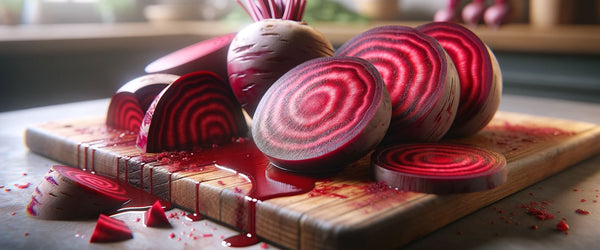Red Alert: Understanding Artificial Red Dyes and Their Side Effects
Artificial Red Dye: An Overview
Artificial red dye, most commonly Red Dye 40 and Red Dye 3, are petroleum-derived substances used to enhance the visual appeal of foods, drinks, and cosmetics. Their safety is a subject of global debate, with research suggesting potential links to health issues such as allergies, hyperactivity in children, and even cancer.
The Chemical Identity of Red Dye
Two of the most common red dyes used in the food industry are Allura Red AC (also known as FD&C Red No. 40 or E129) and Erythrosine (also known as FD&C Red No. 3 or E127). Both are synthetic dyes produced in laboratories.
Allura Red AC is a coal-tar-derived compound, while Erythrosine is an iodine-based compound. Despite their bright, attractive color, these artificial red dyes have stirred controversy over their potential impact on human health.
The Creation of Artificial Red Dye
The synthetic red dye we are familiar with today, Allura Red AC (FD&C Red No. 40 or E129), was originally manufactured in the 1960s. It was introduced as a replacement for Amaranth (FD&C Red No. 2), a dye that was banned in the United States in 1976 due to health concerns.
Industrial Production of Allura Red AC
Allura Red AC, also known as Red No. 40, is a coal-tar derived compound. Its manufacturing process begins with the distillation of crude petroleum, yielding petroleum distillates. These substances are further processed to isolate aromatic hydrocarbons, which undergo a series of chemical reactions involving naphthalene or aniline. The final stage includes sulfonation and salting out, resulting in Allura Red AC.
Industrial Production of Erythrosine
Erythrosine, or Red No. 3, differs in composition from Allura Red AC. It's iodine-based, which means its manufacturing process involves different chemicals. The primary ingredient in the production of Erythrosine is Fluorescein, which is made from phthalic anhydride and resorcinol. The Fluorescein is then treated with iodine and potassium iodide to produce Erythrosine.
The Environmental Footprint of Artificial Red Dye Production
The manufacturing processes of artificial red dyes leave a significant environmental footprint. For instance, petroleum refining releases pollutants into the air, including sulfur compounds and nitrogen oxides. Additionally, petroleum extraction contributes to habitat degradation and potential oil spills.
Furthermore, the large amounts of water used in the sulfonation and salting-out stages can lead to water wastage if not properly managed. Plus, waste products from the production process can contaminate water resources if not correctly treated and disposed of.
In terms of Erythrosine production, iodine extraction can impact marine ecosystems as it is primarily sourced from seaweed or brine deposits.
To conclude, while the vibrant shades of artificial red dyes allure consumers, it's essential to consider the wider environmental implications of these synthetic colors. Understanding the production processes and their impacts allows us to make informed and sustainable choices in our daily consumption.
Allergic Reactions and Side Effects to Red Dye
For some individuals, particularly those with sensitivities or allergies, consuming products with Red No. 40 or Red No. 3 might lead to a range of reactions. These reactions can include skin rashes, itchy skin, hives, nasal congestion, wheezing, and difficulty breathing. More rarely, some people may experience a severe, potentially life-threatening reaction known as anaphylaxis.
There have been some links suggested between artificial red dyes and behavioral effects in children, such as increased hyperactivity. However, the research in this area remains controversial, with further studies required to make definitive conclusions.
Artificial Red Dye and Allergies
One of the most immediate concerns about artificial red dye is the allergic reactions it may cause. Some people are sensitive to Red No. 40 and can experience symptoms ranging from itching and hives to nasal congestion, and in rare cases, anaphylaxis. Children, with their developing immune systems, may be particularly vulnerable.
Link to Hyperactivity
Artificial food dyes, including Red No. 40, have been investigated for their possible links to hyperactivity in children. Some studies suggest a correlation between the consumption of these dyes and an increase in hyperactive behavior, particularly in children with Attention Deficit Hyperactivity Disorder (ADHD).
Impact on Children’s Learning and Memory
Although more research is needed, preliminary studies indicate a potential connection between artificial food coloring and children's cognitive function. Some research suggests that artificial colorants like Red No. 40 may impair learning and memory in children.
Potential Carcinogenic Effects
While the U.S. Food and Drug Administration (FDA) maintains that artificial food dyes, including Red No. 40, are safe for consumption, some animal studies have raised concerns about their long-term safety. There have been suggestions of a potential link between large quantities of artificial colorants and cancer, although this connection remains inconclusive and contentious in scientific circles.
Disruption of Immune System Function
In addition to the above concerns, there is preliminary research suggesting artificial food colorants might interfere with the body's immune response, possibly leading to a higher susceptibility to illnesses. Again, these findings are preliminary, and more research is needed to definitively establish this connection.
In conclusion, while artificial red dye is approved for use, potential health implications have been noted, particularly in children. Therefore, it's critical to make informed decisions about the foods we consume and provide to our children.
Regulation and Safety Concerns
Over the years, safety concerns led to stricter regulations of food coloring in the United States. The Pure Food and Drug Act of 1906 was the first major regulation to address the issue of food additives, including synthetic dyes.
In 1938, the Federal Food, Drug, and Cosmetic Act further tightened control over food dyes by requiring them to be batch certified, meaning each production batch of the dye must be tested and certified by the FDA for safety.
Present Status of Artificial Red Dye
Today, artificial red dye, specifically Allura Red AC, is one of the most commonly used food dyes in the United States. However, its use remains controversial due to health concerns, particularly its impact on children's health. This has led to increasing consumer demand for naturally derived food colorants and more transparency in food labeling.
How Other Countries Regulate Artificial Red Dye
European Union - The regulations around artificial red dye in the EU are stringent. Most artificial food colors, including Red Dye 40 and Red Dye 3, are strictly controlled in the EU. Allura Red AC is classified as E129, and while it is approved for use, any food or drink that contains this dye must carry a warning label stating that it "may have an adverse effect on activity and attention in children." This labeling law has resulted in many food manufacturers reformulating their products to avoid such warnings.
United Kingdom - While technically not banned, Allura Red AC is seldom used due to the voluntary "Southampton Six" pledge. This followed research from the University of Southampton in 2007, which suggested a link between six food dyes, including Allura Red AC, and increased hyperactivity in children.
Asia - Regulations around artificial red dye vary widely from one country to another. Countries like Japan, known for its rigorous food safety standards, have banned the use of Red Dye 40 in food products. Other countries, such as China and India, have set limits on the concentration of artificial colors permissible in food products, though enforcement of these rules can be inconsistent.
Australia and New Zealand - regulate food additives including artificial colors through the Food Standards Australia New Zealand (FSANZ). FSANZ permits the use of certain artificial colors, including Red Dye 40, but maintains stringent safety assessment procedures to ensure that they do not pose a risk to human health.
Spotting Red Dye - Popular Foods with Red Coloring
Identifying artificial red dye in everyday foods is a crucial step in managing potential allergies or sensitivities. Here are the top three food categories where these dyes often feature:
- Sweets and Candies: Many candies, gummies, and colorful sweets use artificial red dyes to achieve their vibrant color.
- Beverages: Certain sodas, fruit punches, and drink mixes may contain red dyes.
- Processed Snacks: Snacks like chips or breakfast cereals often use food coloring, including red dyes, to enhance their appearance.
Natural Alternatives to Artificial Red Dye
There are many natural food ingredients that you can use to color your food red without synthetic chemicals like Allura Red AC or FD&C Red No. 40! Beets, berries, red cabbage, and even bugs are known natural sources of red coloring, capable of creating vibrant colors for food or wool.
Read More: How to Make Natural Red Food Coloring and Dyes




